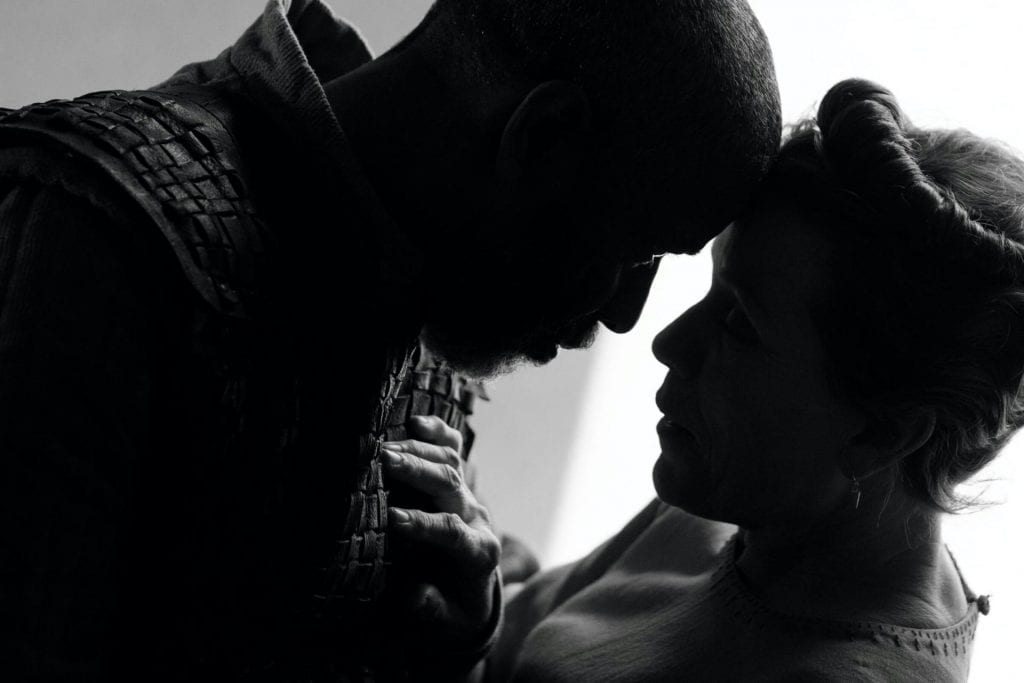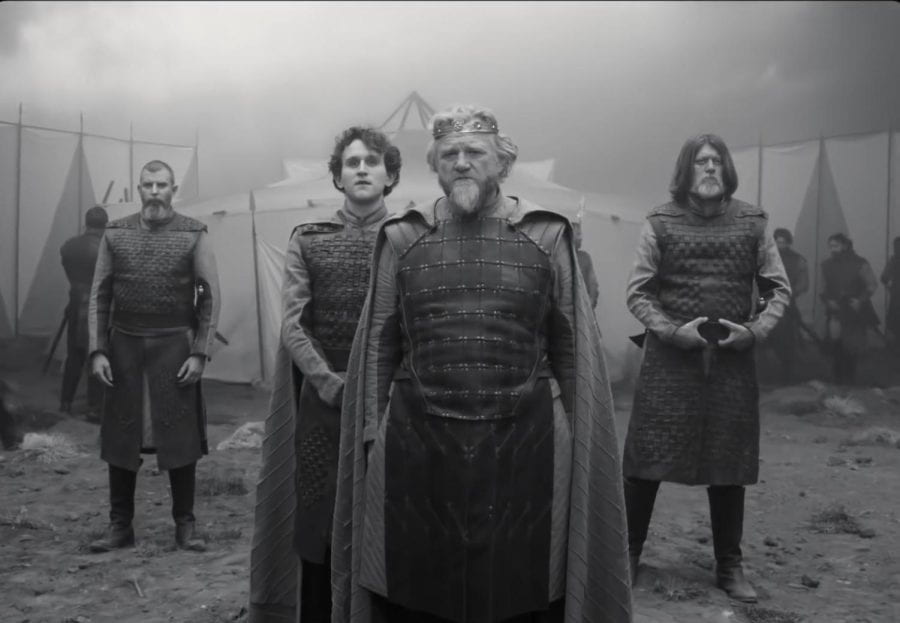
I love watching different film adaptations of Shakespeare’s plays for the same reason that I love listening to different jazz musicians improvise off of old standards.
The basic elements — whether it’s plot points or musical notes — may be the same, but the distinctive contributions of individual artists give it a particular character which is unique to that version and that version alone. Watching different film adaptations of the same play can give you a greater appreciation for certain images which might be impossible to create onstage, or enjoy different performances which bring a fascinating new interpretation of familiar characters to life, or even see it in an entirely new way altogether.
Writer-director Joel Coen’s new adaptation of Macbeth (the first film he has made without his brother and longtime collaborator Ethan), which he has given the title The Tragedy of Macbeth, does all of these things with style and a well-calibrated sense of dread that will be familiar to fans of film noir. It should be said that this new version does give many of the usual pleasures of Macbeth — namely brilliant language and an indelible story — and the costumes created by longtime Coen collaborator Mary Zophres identify the film as taking place in Medieval times, as do many adaptations of this play. But much of the fun of this film, like all different versions of great works of art, comes from enjoying what makes it distinctive.

The most memorable thing about this new adaptation of Macbeth is its jaw-droppingly beautiful black-and-white cinematography. Coen and director of photography Bruno Delbonnel create stunning images which, when coupled with the abstract sets, give this film a fascinatingly dreamlike quality. Their images also take full advantage of the monochromatic colors black and white. Coen and Delbonnel begin certain scenes with characters walking out of white fog, and the pitch-black night scenes create a visual darkness that go well with the story’s narrative gloom. One shot, in which a character falls through white smoke, is as memorable as any I’ve ever seen. The only other film I can think of which used black and white with such precision is the Jacques Demy film Bay of Angels (1961), which was also about a destructive romantic and professional partnership between a man and a woman.
One of the interesting things about this adaptation of Macbeth is that its title character (Denzel Washington) and Lady Macbeth (Frances McDormand) are middle-aged as opposed to young, as they are often portrayed. This decision works surprisingly well, especially when you consider the actors it allows to play these iconic parts. Washington is excellent as a more weathered Macbeth, and you can trace his narrative arc of devolving into violence and paranoia by how his voice rises from a measured murmur to a booming loudness over the course of the film. McDormand is spellbindingly subdued as Lady Macbeth, particularly in how she recites many of her early lines. But her knack for eccentricity shows itself in great physical moments, such as when she tosses aside a lock of hair. As a pair, their age brings a greater urgency to their decision to kill Duncan (Brendan Gleeson), the king of Scotland, as time is a resource they can’t rely on in a way that younger characters could. Their age also gives them more of a familiarity and ease with each other, which makes Lady Macbeth’s death all the more tragic for her husband.

Aside from its brilliant cinematography and excellent lead performances, The Tragedy of Macbeth is probably going to be best remembered for Kathryn Hunter’s performances as the Witches. Hunter, who is well-known for her work in theater, is most famous for her great skill as a physical actor. The way she contorts herself into different positions and hisses out her famous lines is fascinating and unnerving. Hunter makes the Witches, as well as an old man whom she plays while wearing heavy make-up, as terrifying as any movie monster and unlike anything else in previous adaptations of Macbeth. Indeed, with its spooky shots and creepy score by longtime Coen collaborator Carter Burwell, The Tragedy of Macbeth feels like it could fit comfortably into a collection of A24’s other horror films. You could even watch it on a double bill with Hereditary (2018), which also featured a man navigating a combative relationship with a strong, complex female character on the road to fulfilling his destiny.

The classics, whether they’re old plays or songs, aren’t musty works of art which should be shunted off into a corner. Rather, they have an elemental power and a vibrant vitality which can be tapped by many artists for centuries. Joel Coen’s The Tragedy of Macbeth proves this point and is a reminder that there are as many great Shakespeare films as there are great artists, and that there will be many more wonderful film adaptations of his plays to come.

The Tragedy of Macbeth will be screened at IU Cinema on February 11 at 7 pm and February 13 at 1 pm as part of the International Art House Series.

Jesse Pasternack is a graduate of Indiana University. During his time at IU, Jesse was the co-president of the Indiana Student Cinema Guild. He also wrote about film, television, and pop culture for the Indiana Daily Student. Jesse has been a moderator at Michael Moore’s Traverse City Film Festival and is a friend of the Doug Loves Movies podcast. An aspiring professional writer-director, his own film work has appeared at Campus Movie Fest and the Anthology Film Archives in New York City.